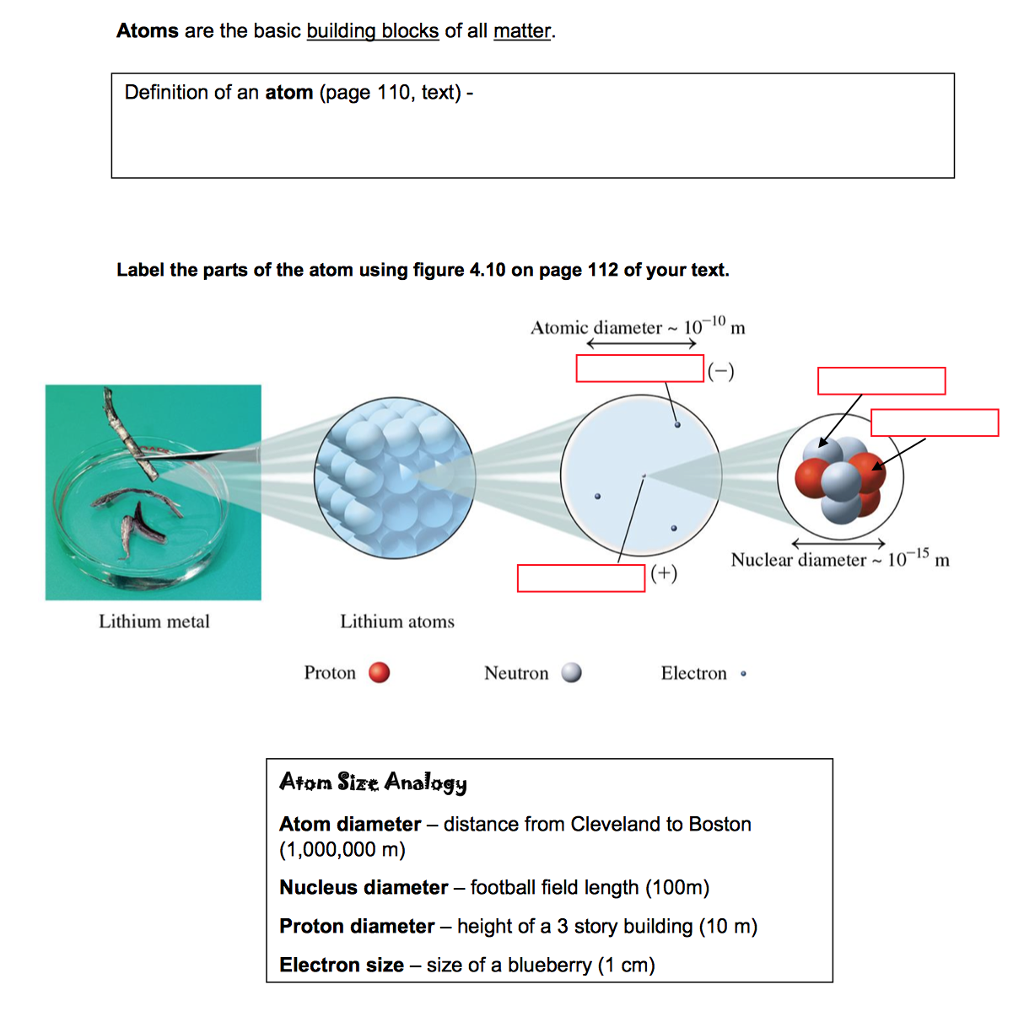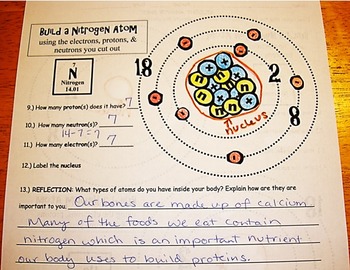

Based on this information, list the requirements for two atoms to be isotopes of each other. The atoms in the previous question are isotopes of each other. the number of neutrons is different for all three atoms (16, 17, 18) 14. the number of protons is the same for all three (8) e) List all of the things that are different about these atoms (ignore the electrons). What are the names of the stable forms of oxygen? a) Oxygen 16 b) Oxygen _ 17 c) Oxygen _ 18 d) List all of the things that are the same about these atoms (ignore the electrons). Play with the simulation to determine: a) Which particles affect the stability of the atom? protons and neutrons b) Which particles do not affect the stability of the atom? electrons _ 13. The symbol is the same as the first letter of the element. Describe the similarities and differences between the Symbol and Name representations. 2ģ a) Complete the table below: Symbol Name Carbon 12 Fluorine 18 Boron b) Each representation (Symbol and Name) in the table above provides information about the atom. In addition to atomic symbol, we can represent atoms by name and mass number. Play until you can get all the questions correct on the 4 th level. Practice applying your understanding by playing the 3 rd and 4 th game levels.
BUILD AN ATOM FULL
a) Element Symbol a one or two letter abbreviation to represent the full name of the element b) Charge the difference between electrons and protons (+ has more protons, has more electrons, 0 has same of both) c) Atomic Number identifies the number of protons d) Mass Number identifies the number of protons and neutrons 10. Create a definition (using a complete sentence) for each of these items based on your labels from the atomic symbol above. a = element symbol b = charge c = atomic number d = atomic mass 9.

a) In the atomic symbol below, label each letter ( a, b, c, and d ) with: the particle(s) used to determine the letter, and how the value of each letter is determined. Using the Symbol readout box, figure out which particles affect each component of the atomic symbol. If you do well on those first 2 levels, move on the 3rd and 4th level! PART II: SYMBOL SCREEN 8. Practice applying your understanding by playing 1 st and 2 nd levels on the Game screen (the tab at the top). a) What is a rule for determining the mass number of an atom or ion? Mass = the number of protons + the number of neutrons. Click on the green + sign next to Mass to reveal the balance, then continue to play the same way you were before. Play with the simulation to discover what affects the mass number of your atom or ion. The charge of an atom is determined by the ratio of protons to electrons. b) Develop a relationship (in the form of a single sentence or equation) that can predict the charge based on the number and types of particle. Negative ions have fewer protons than electrons. Positive ions have more protons than electrons. a) Fill in the blanks below to show your results: Neutral atoms have the same number of protons and electrons.

Play with the simulation to discover which particles affect the charge of an atom or ion. What is the name of the following atoms? a) An atom with 3 protons and 4 neutrons: Lithium b) An atom with 2 protons and 4 neutrons: Heleum c) An atom with 4 protons and 4 neutrons: Beryllium 5. What did you discover? Protons adding them moves from left to right on the Periodic Table 4. Play until you discover which particle(s) determine(s) the name of the element you build.

You can get the atom to be stable/unstable by adjusting the number of neutrons Adding electrons will change it from a +ion to neutral atom, to ion depending on how many electrons you add Adding electrons you can only add 2 to the first orbital and 8 to the second b) What particle(s) are found in the center of the atom? Protons and neutrons 3. Adding protons changes the identity of the atom adding one moves from right to left on the Periodic Table. Responses will vary, but here is what you should see. a) List two things your group observed in the simulation. As you explore, talk about what you find. Explore the Build an Atom simulation with your group. 1 ANSWER KEY : PART I: ATOM SCREEN Build an Atom simulation ( an atom ) 1.


 0 kommentar(er)
0 kommentar(er)
